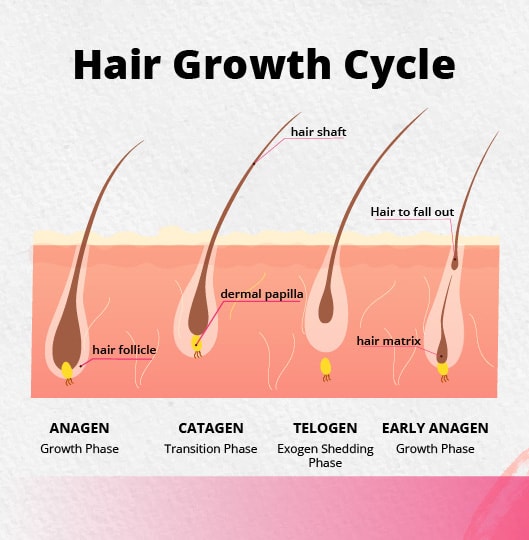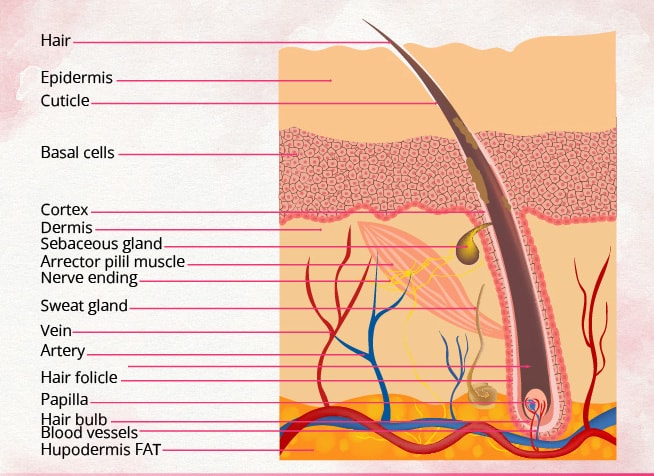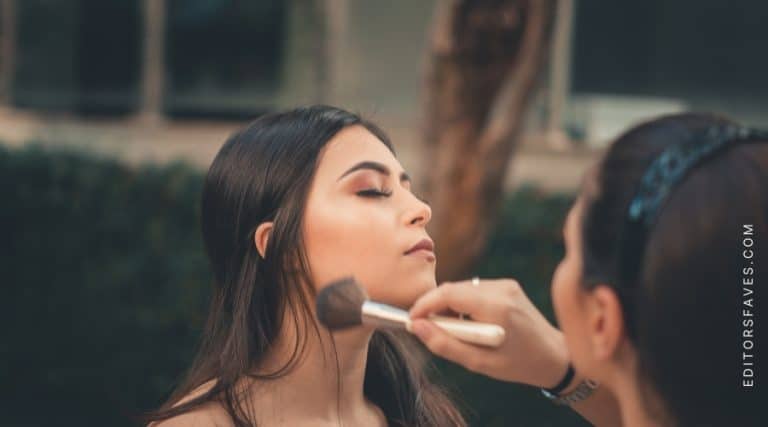How Hair Cycles Affect Your Waxing Game

When do you know to make your next waxing appointment?
As an affiliate partner of various brands and sponsored content, we may earn commission on qualifying purchases. Disclaimer | Advertise With Us
Is it because it’s been six weeks, and that’s when your esthetician tells you to come back? Do you just look at your body and notice more hair and figure it’s time for it to be removed again?
Actually, the answer has to do with hair cycles, even if you didn’t realize it.
However, you come to your conclusion to make your next appointment- it’s really what stage of the hair growth cycle you’re in that determines when you should go get your next wax.
Huh…All along, you thought you were in control. We hate to break it to you, but you have no control over this one.
Your body naturally goes through these cycles without you even realizing it, and these cycles can really make or break your waxing game, depending upon what stage your hair is in when you get waxed and if your hair is all on the same cycle or not.
What are these stages we speak about?
We’ve got all the information you need! Please, keep on reading!
How Many Cycles Does Your Hair Have?
Each hair in your body goes through one complete hair cycle that encompasses four separate stages: anagen, catagen, telogen, and exogen.
The hair cycle is the series of phases your hair goes through in its lifetime (from birth to shedding). Within that cycle’s four stages, different things occur.
The Anagen stage is all about hair growth, catagen is the transitional stage, telogen is the resting phase, and exogen is the shedding stage.
We’ll get into these stages a little further in a minute, but there’s something we need to address first.
Since your hair is constantly growing, it also rests and sheds to make room for newer growth. The length of each phase varies depending upon where the hair is on your body- which you’ll see in a bit!

Do All Body Hairs Cycle The Same?
Your head hairs cycle differently than your eyebrows, pubic hair, leg hair, etc.
Your head hairs grow continuously, and while your eyebrows and other hair also grow continuously for a while, these growth periods are different time lengths depending on where the hair is growing.
It’s all up to the hair cycle!
For the sake of understanding how the hair cycle works, we’ll go through some hair types and what each hair’s growth pattern is like:
Your head hair follicle has its own schedule; it rests and grows continuously for a period of 3-5 years. Some head hair can have a growth phase of up to 7 years!
Your eyebrow’s hair growth cycle lasts about 3-4 months.
Your pubic hair cycle is about 4-6 weeks, which is more like the rest of your body’s hair growth cycle.
You’ll start to feel stubble (ouch) within at least six weeks from the hair you previously waxed.
Basically, each hair type on your body has its own unique growth pattern and cycle.
Now, we’ll get into more detail about the different phases during our hair cycles.
Hair Growth Cycle Chart
Our chart here shows the four major stages of a hair cycle. Keep in mind, the length of each of these stages can significantly depend upon where the hair is located on our bodies.

Stage 1: The Anagen Phase (Hair Growth)
This is the phase of the hair cycle where your hair is fully growing. You’ll also find increased melanin (the pigment that gives hair its color) developing.
Your hair grows in this stage because of increased blood flow to the area.
This is additionally the prime time in the hair cycle to wax. Since the hair is brand new and growing from the root, you’ll get the strongest pull leading to longer-lasting results.
It is critical for your clients to understand that waxing during the anagen phase weakens the follicle, which hinders future hair growth, making hair more sparse the longer you wax.
Stage 2: Catagen Phase (Transitional Phase)
When the anagen stage ends, you’ll go into the catagen or transitional phase for about ten days.
During this phase, your hair is no longer growing, and the hair bulb is detached from the very bottom of the follicle so new hair can begin to form within the follicle.
This would not be a good stage to wax because you are pulling out a hair already detached from the follicle, which won’t weaken the follicle and ultimately contribute to a slower re-growth.
Stage 3: Telogen (Hair Growth Remains Stable)
The third phase of your hair growth cycle is called telogen, and it lasts around two to four months on average.
This is when your hair is no longer deep in the root, it is no longer growing, but a small hair is beginning to bud within the follicle underneath the current long hair.
At this stage, your current hair is no longer growing, and yet it has not shed either. It has plateaued.
The same comments on why waxing wouldn’t be opportune in the catagen phase apply to the telogen phase.
Stage 4: The Exogen Phase (Hair Shedding)
And finally, this is where you’ll notice hair shedding. This last stage of the hair life cycle lasts for a wide range of time up to a few months!
As hair is shed, new hair continues to grow within the follicle until the new hair goes into its anagen phase, and the entire cycle begins again with this new hair.
You’ve got the basics of a hair cycle, but really how many months is a hair cycle in total?
How Many Months Is A Hair Cycle?
The amount of time, or months, of a hair cycle, depends on what hair on the body we are talking about.
A total hair cycle could be a total of 3-7 months or 66 months (5 1/2 years!) for an entire hair cycle for the ones on your head.
How so?
The catagen, telogen, and exogen phases remain relatively similar for most hair on the body ranging from 2-6 months for facial and leg hair.
The anagen phase (growth phase) is what ranges the most depending on where the hair is growing. Leg, bikini, and eyebrow hair only go through the anagen phase for one to one and a half months, while head hair lasts in the anagen phase for potentially five years, or 60 months!
How Hair Cycles Affect Your Waxing
Ideally, you want to be waxing during the anagen phase of each hair cycle to not only affect future hair growth by pulling the hair directly out of the follicle.
But you also get the longest-lasting results by doing this since a new hair has not yet begun to form underneath the current one like in the telogen phase.
However, you can’t know precisely when your anagen phase is, and each individual hair isn’t always in the same stage of its hair cycle.
All of this means, in your beginning journey with waxing, you will notice that even right after you wax, you may have hairs that begin to grow again fairly soon.
These are the hairs from the follicle that you removed but may have already been in the telogen or exogen phase.
As you continue to wax consistently, often every 4-6 weeks, this pulls hairs out from all stages of the hair cycle, eventually pulling them all, or mostly all, while they are in the anagen phase.
Once you get to this point in your waxing endeavor, you will begin to see the longest-lasting results as all of the hair is now being pulled directly from its root.
So, are hair growth cycles essential to understand?
Most certainly!
Understanding hair growth cycles gives you realistic expectations as to how long your first few waxes will last.
Additionally, it emphasizes sticking to a regular waxing schedule and trying not to cancel appointments; if you wait too long, you could end up missing the anagen phase and waxing on another least effective stage.
How Hair Cycles Affect Your Waxing Game – Conclusion
Hair cycles vary depending on where the hair is on your body. Though the length of time changes, the process does not.
One hair cycle has four phases: anagen, catagen, telogen, and exogen.
Anagen can be the longest stage as it is the period where your hair is growing. This is the best time to wax.
The catagen stage is when hair transitions from growing to resting and is released from the follicle and pushed upward.
The telogen phase is the resting period. Hair does not grow nor shed, and new hair begins to form underneath in the follicle.
Exogen is the phase where the hair sheds.
As you continue to wax, you will get the best results as all of your hair will ultimately end up on the same hair cycle, leaving you with the longest-lasting and smoothest results possible!







